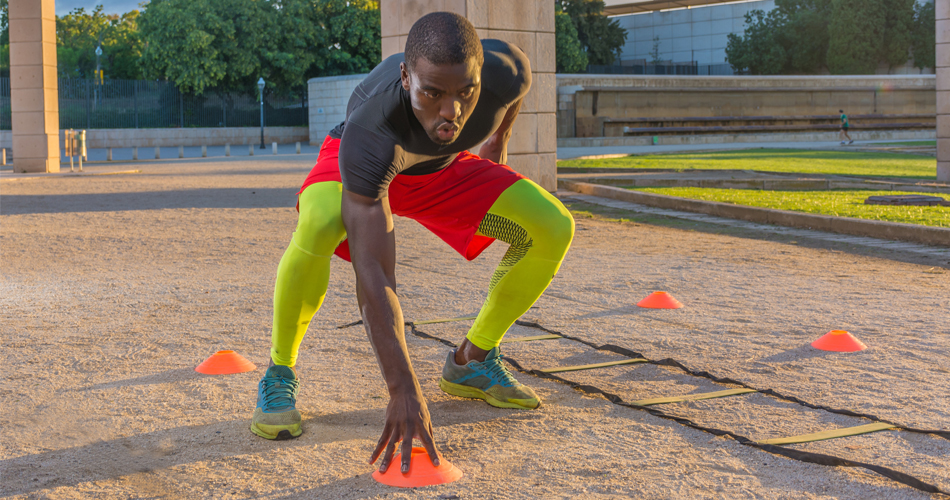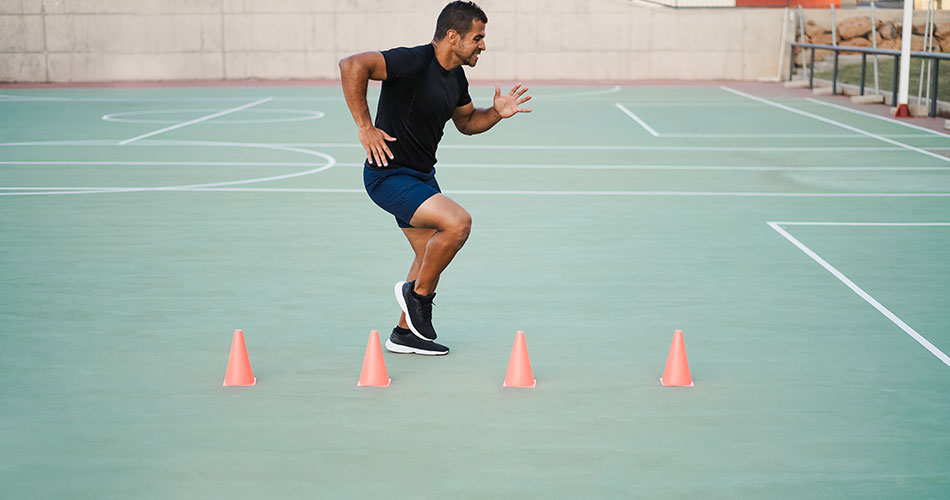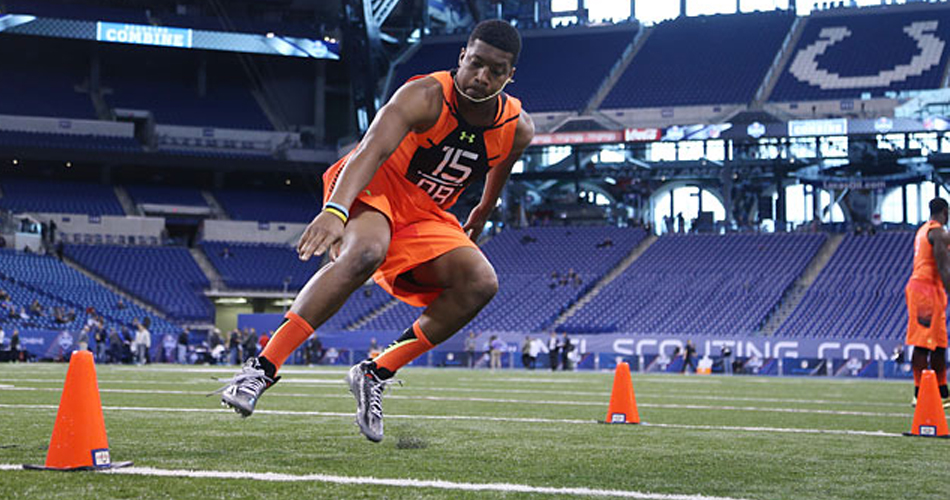Testing and Training Agility in Sports – Part 4
Previous parts:
- Testing and Training Agility in Sports – Part 1
- Testing and Training Agility in Sports – Part 2
- Testing and Training Agility in Sports – Part 3
Target-oriented Approach to the Long-term Agility Development
Agility is defined as an independent motor skill (Plisk, 2000). The previous studies lead to the conclusion that there is very little positive transfer between the straight line speed and agility (i.e. change of direction speed), which basically means that the development of agility requires a specific training (Jeffreys, 2006a). If agility is a skill that is learnable and can be improved by training, then the agility training should be treated as a part of motor learning, like every other skill in any other sport (Jeffreys, 2006a). In learning traditional motor skills, for instance ball kicking, training usually follows the planned path, starting by learning simple movements and progressive advancing to advanced, complex and ‘open’ skills. Taking into account that agility is basically a motor skill, agility training should be structured in the same manner, in order to gain optimal efficiency in learning.
Ian Jeffreys (Jeffreys, 2006a, 2006b) suggests in his studies the concept of the long-term agility development, which will be presented in the next section of this article.
Identification of Agility Fundaments
The important first step in developing a program for agility development is to identify key motion patterns that occur when executing agility tasks (Jeffreys, 2006a). Since agility is a “serial skill” (Magill, 1998), it can be divided into a series of discreet motion patterns with its functions and techniques. Agility involves an effective combination of these discrete motion patterns and movements we see in sports. These basic motion patterns can be called “target movement patterns” and can include 33 movements, such as shuffling, backward running, lateral cutting and hip turn.
Once these target movement patterns are identified, each of them can be divided into target mechanics, which can be observed as the key mechanical actions that athletes have to be able to perform, in order to perform efficiently a target movement pattern (Jeffreys, 2006a). This involves deconstructing movements to the key mechanical actions, for instance for efficient shuffling, target mechanics refers to feet posture, weight transfer etc. Target movement mechanics is based on mechanical principles, such as ground surface optimization, center of mass controlling and optimal feet posture in order to achieve maximum generation of ground reaction force.
The next important aspect is the identification of a target context within which the skill is being performed, i.e. the context within which athletes want to be capable of performing a certain (Schmidt, Wrisberg, 2004).
Consideration in this very aspect involves “read and react stimuli”, a competition level, as well as the ground on which the sport is played. As the agility skills develop through the development phases described further in the text, the training environment will become more and more specific for the target context (Jeffreys, 2006a).

Figure 13. Agility fundaments – target movement patterns, target mechanics and target context
Identification of Target Movement Pattern Functions
As already mentioned, agility is considered to be a serial skill, which includes integration of a certain number of discrete target movement pattern into one functional whole (Jeffreys, 2006a). By deconstructing agility to target movement patterns, a new way of classification, focused on specific function of key movements, can be used (Jeffreys, 2006a). For instance, a soccer player follows his rival as a defender, and when his rival tries to demarcate, the player makes a sharp hip turn (Figure 17), then makes cross-overs in order to get to the rival and enter a duel with him. This sequence of movement can be deconstructed into target movement patterns: (1) lateral and backward motion, (2) hip turn, (3) lateral cross-overs (4) duel. Each of these movement patterns has its own specific function.
According to Jeffreys (2006a), every target movement pattern can, due to its function, be classified into:
- Initial movement patterns
- Transitional movement patterns
- Actualization movement patterns
Initial Movement Patterns
When performing initial movement patterns, the athlete is being prepared to initialize or change the movement. This usually involves very short and quick movements that allow athlete to start or change the current movement, most common as a respond to an external stimulus (Jeffreys, 2006). For instance, the soccer player who waits for the corner kick can perform cross-step (Figure 15) aiming to free himself from the defender and kick the ball with his head. If this attempt fails, he can suddenly change his direction using lateral cutting (Figure 16). In both cases, these movements (target movement patterns) are examples of initial movement patterns. Typical initial patterns are cross-step, plyo-step, cut-step, hip turn etc.
Plyo-steps occur when athlete has to accelerate suddenly from parallel upright position (Figure 14). “Paradoxical movement” in this case is a step back. Most of the trainers consider this step back to be a result of a bad technique and claim that it slows down the acceleration; however, since the athlete is in an inadequate position for propulsive force generation (upright, parallel feet), that step back is actually an adjustment of the posture in order to get maximum acceleration (Taft, 2005a, 2005b).The only published research on this subject (Kraan, van Veen, Snijders, Storm, 2001) states that this step back is a natural reaction which occurs in 95% of starts from parallel upright position, therefore it has positive contribution to the force and power during the start. As the results of this research, the authors state the following:
- In order to achieve the fastest start from the parallel upright position, the point of contact with the ground must be behind the center of mass
- From the parallel upright position, the quickest start can be achieved using plyo-step
- Plyo-step gives more strength and power during the contact with the ground than start without plyo-step, as well as in start with one leg in front of the other, which becomes the pushing leg
- Start with plyo-step requires less time for achieving maximum push force, so the top of that force is higher, which contributes higher acceleration
- Training should be focused towards start from parallel upright position in order to increase the impulse
Taft (2005a, 2005b), a trainer who named this step plyo-step, due to the share of the reactive strength that occurs when performing the step back, claims that trainers make mistakes trying to fix this “paradoxical step” in athlete’s performance. According to Taft, that is wrong and limits athlete’s acceleration ability. Of course, sometimes happens that player can violate the rules if he performs that step back (for instance, in basketball, when player receives the ball near the line of the court, if he makes that step back, he will step out the court lines), but those cases are rare and athlete should be aware of the fact that using plyo-step means violation of the game rules.

Figure 14. Plyo- step. Taken from Taft (2005b).
Cross-step (directional step) occurs when the athlete has to accelerate under certain angle from the upright position (Figure 15). It can be said that lateral start is actually lateral plyo-step (Taft, 2005b).

Figure 15. Cross-step or directional step or lateral plyo-step. Taken from Taft (2005a).
Lateral cutting (cut-step) is being performed during the change of direction in sprint (Figure 16 and Figure 11). During lateral cutting it is important to keep the low center of mass, body lean in that side where the direction change should be performed, as well as the surface of the ground which depends on posture of the bounce leg (right leg during left turn; left leg during right turn). If the lateral cutting is not performed well, the athlete is out of the balance, so he needs more time to post himself in the proper position for acceleration. This is exactly one of the aims of feints in sports – deliberately pulling the opponent out of the balance.

Figure 16. Lateral cutting, or cut-step. Taken from Taft (2005b).
Hip turn is being performed when the athlete must make a 180° turn, i.e. act behind his back from the upright position (Figure 17). Lee Taft (2005a, 2005b), a trainer who named this initial movement as well, claims that hip turn is much quicker and safer than the “pivot”, because it is a unified movement during which the athlete rotates his legs in the position for the optimal acceleration, and thereby uses the elastic energy during landing. According to him, “pivot” is slower because it consists of two movements, so it posts the knee into an unfavorable position (rotation around the stable foot).

Figure 17. Hip turn. Taken from Taft (2005a).











Responses